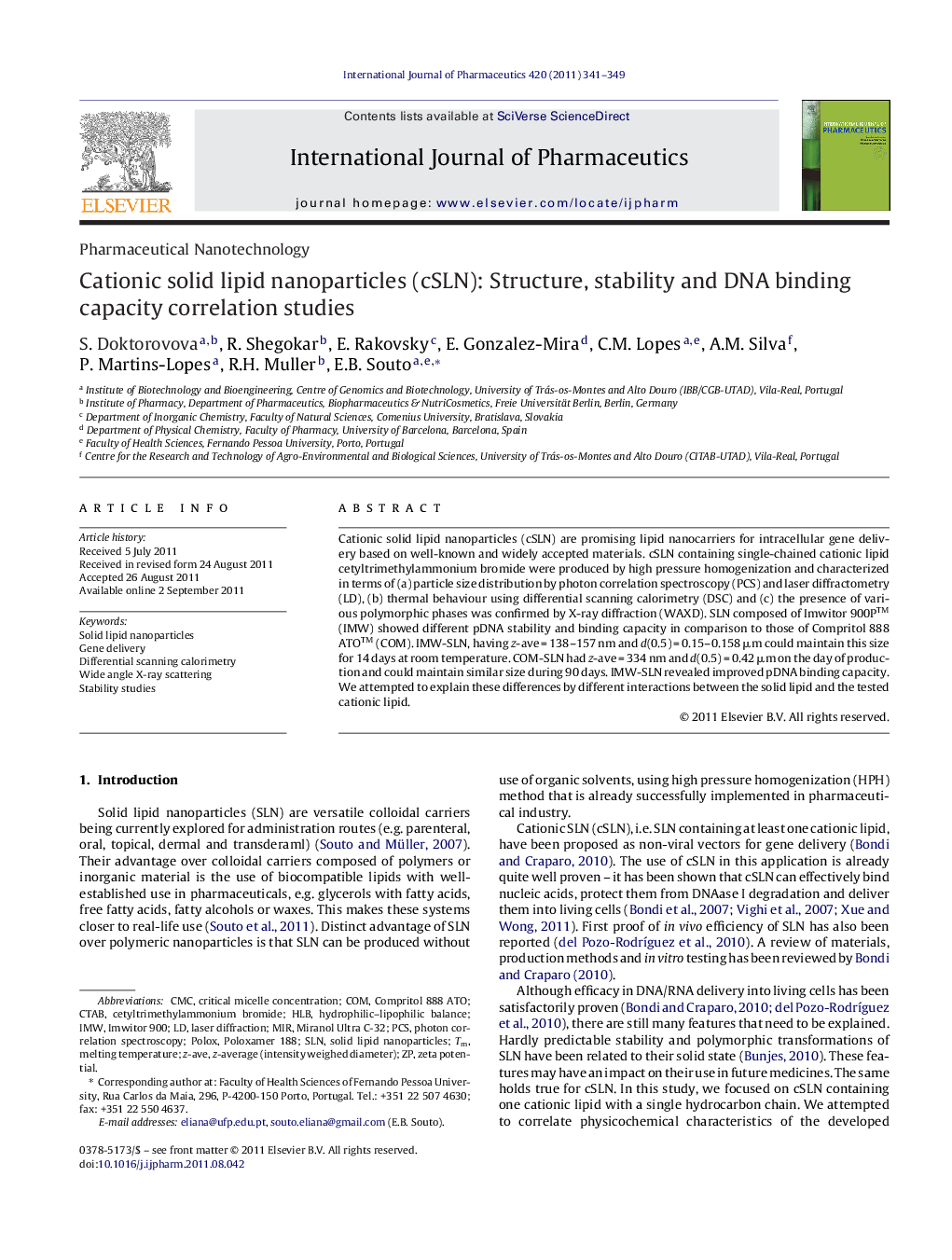| Article ID | Journal | Published Year | Pages | File Type |
|---|---|---|---|---|
| 2502999 | International Journal of Pharmaceutics | 2011 | 9 Pages |
Cationic solid lipid nanoparticles (cSLN) are promising lipid nanocarriers for intracellular gene delivery based on well-known and widely accepted materials. cSLN containing single-chained cationic lipid cetyltrimethylammonium bromide were produced by high pressure homogenization and characterized in terms of (a) particle size distribution by photon correlation spectroscopy (PCS) and laser diffractometry (LD), (b) thermal behaviour using differential scanning calorimetry (DSC) and (c) the presence of various polymorphic phases was confirmed by X-ray diffraction (WAXD). SLN composed of Imwitor 900P™ (IMW) showed different pDNA stability and binding capacity in comparison to those of Compritol 888 ATO™ (COM). IMW-SLN, having z-ave = 138–157 nm and d(0.5) = 0.15–0.158 μm could maintain this size for 14 days at room temperature. COM-SLN had z-ave = 334 nm and d(0.5) = 0.42 μm on the day of production and could maintain similar size during 90 days. IMW-SLN revealed improved pDNA binding capacity. We attempted to explain these differences by different interactions between the solid lipid and the tested cationic lipid.
Graphical abstractGel retardation assay. From left to right: (1) DNA ladder, (2)–(6) SLN-A:pDNA in ratios 50, 40, 30, 20, 10:1 (w/w), (7)–(11) SLN-B:pDNA in ratios 50, 40, 30, 20, 10:1 (w/w), (12)–(16) SLN-C:pDNA in ratios 50, 40, 30, 20, 10:1 (w/w), (17) DNA ladder, (18) free pDNA. Except SLN-C at 10:1 ratio, all complexes could prevent the pDNA from migration in electric field, proving its successful coupling with SLN.Figure optionsDownload full-size imageDownload as PowerPoint slide
